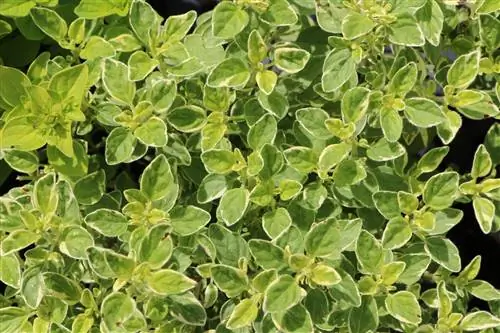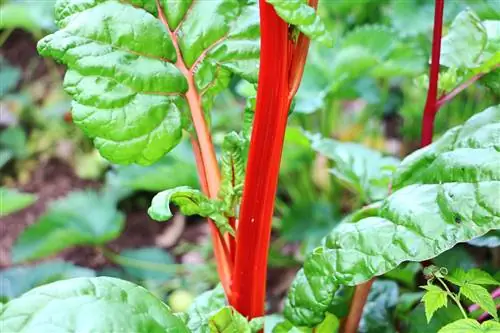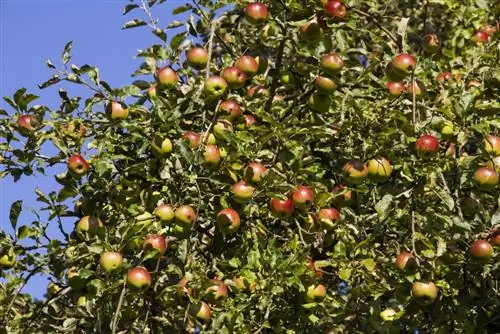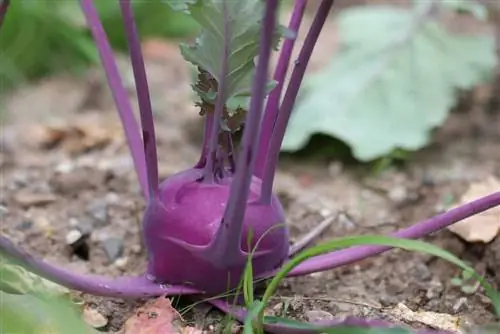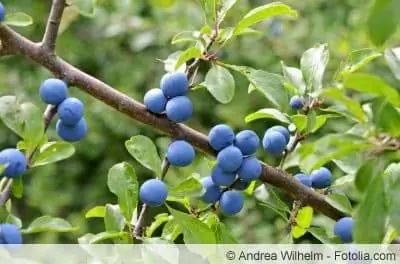- Author admin [email protected].
- Public 2023-12-17 03:39.
- Last modified 2025-01-24 12:45.
Sausage herb, Origanum majorana or Mairan - behind all these names is the versatile marjoram, which can be used in numerous dishes. In addition to its deliciously spicy taste, marjoram also impresses with its easy-care nature, pleasant aroma and decorative flowers.
Whether it should be grown in the garden or on the windowsill - if you want to reap a rich harvest, you have to pay attention to a lot of things when it comes to the grateful Origanum majorana.
Location
The ideal location for the marjoram is somewhat sheltered but in the sun. It is best to choose a location in full sun that is not exposed to cold winds or heavy rain. If marjoram is to be grown on a bed, predecessors and direct neighbors must be taken into account.
Marjoram is well tolerated with:
- Chamomile
- Radish
- Beans
- Carrots
- Onions
- Peas
Thyme, however, should not be placed nearby. In addition, after growing Origanum majorana, a planting break of two to four years must be observed, as the herb reacts incompatible with itself.
Substrate
The substrate for the marjoram should be rich in humus, permeable to water and loose. Herbal, vegetable or potting soil mixed with sand, gravel or coconut fiber is well suited. This addition loosens the soil, thereby preventing compaction and waterlogging.
Tip:
A small addition of lime, provided the selected soil is not already calcareous, allows the Origanum majorana to thrive better.
Preparing and planting
- Watering: If the marjoram is in the garden bed, it usually supplies itself well with water. You should only use a watering can when the temperatures are very high and there is no rain. It is important to avoid waterlogging as the sausage herb reacts very sensitively to it.
- Of course things are different when it comes to culture in a bucket. Regular watering is mandatory here. Frequent but small amounts of water are ideal. Since the plants tolerate lime well, the irrigation water can come fresh from the tap.
- Fertilizing: Marjoram is particularly easy to care for when fertilizing, as additional nutrients can be dispensed with completely.
- Blend: If you harvest continuously, you can completely ignore the marjoram trimming. However, if only a small amount of fresh marjoram is needed at a time, we recommend shortening the shoots occasionally. About a third of the length should be removed all around.
- The trimming stimulates denser growth in marjoram and the plant remains compact. On the one hand, this has optical advantages, and on the other hand, the plant is less susceptible to damage, such as broken branches.
Harvest
We read again and again that marjoram can only be harvested until it begins to bloom. However, this popular belief is not true. Although many of the essential oils pass into the buds and flowers during the flowering period, the leaves become less aromatic - but the plant does not become inedible or even poisonous. Therefore, you can continue to harvest and season.
To harvest the marjoram, simply cut off the required number of branches with a sharp knife or scissors. Also with flowers. These can be processed fresh or air dried. The only thing to note is that only half of each shoot is removed. This is necessary for regrowth, especially with larger harvest quantities.
Tip:
You can harvest outside from the shoot until autumn. If the plant is brought indoors in good time, the harvest can take place all year round. And with Origanum majorana, as with all herbs, this is best done in the morning or mid-morning.
Wintering
Origanum majorana is not hardy in these latitudes, so if it stays outside in autumn it will die. No protection will help the marjoram here either. However, if it is brought indoors in autumn and given a bright location, it can be grown all year round. Even smaller harvests are then possible on it.
In its winter quarters it needs normal room temperatures of 18 °C to 25 °C as well as water. The casting behavior does not have to be restricted or changed here. Fertilization is still not necessary.
Repotting and moving
If the marjoram is free in the bed, it remains an annual, as already mentioned. So a conversion is not necessary here. However, it should be noted that the plant is self-intolerant and must be placed elsewhere the following year. When cultivated in a pot or bucket and overwintered indoors, marjoram is perennial and grows more easily. It may be necessary to change the substrate and use a larger pot. The measure is conveniently carried out in spring when the plant begins to sprout again.
Typical pests and diseases
Origanum majorana is less susceptible to diseases and pests when placed in the right location and with careful care. Of course, these can still occur. The main things to watch are:
- Aphids
- Rot
- Mint Rust
- Marjoram moth and its caterpillars
- Mint Leaf Beetle
- jumpbugs
Appropriate watering and avoiding dryness and waterlogging help against fungal infections, such as mint rust and rot. If the rusty brown deposits of mint rust appear on the leaves, they should be removed immediately. This measure is usually enough to stop the infestation. The cut shoots should be destroyed - if they get into the compost, they could spread further from here. If cutting does not help, an appropriate fungicide must be used. If rot occurs - as long as the damage is still limited - an immediate change of the substrate and the removal of all damaged parts of the plant are the only options for saving the marjoram.
The pests show traces of feeding that stand out light or dark from the leaf color. In any case, the affected plants should first be showered off. Heavily eaten or occupied plant parts are cut off. Mild infestations can often be stopped in this way. Introducing natural enemies, such as ladybirds against aphids, is definitely preferable to using insecticides with marjoram.
Frequently asked questions about marjoram
Is marjoram poisonous to animals?
Origanum majorana is not poisonous, but its essential oils mean it is not he althy for pets either. The intake of larger quantities must therefore be avoided.
Can I freeze marjoram?
Yes, although the plant is not hardy, the harvested leaves can definitely be frozen. The homeland of this well-known spice is Near and Central Asia. Marjoram is now grown all over Europe - but especially in Italy, Spain and France.
What you should know about marjoram in brief
Because its essential oil content depends heavily on the climate, soil conditions and season, marjoram - embedded in light, humus-rich soil - needs a place that is as sheltered from the wind as possible, warm and sunny. The plant is originally a perennial, but in our latitudes it is only an annual due to its sensitivity to frost.
Cultivation
- The seeds are sown in mid-March on the windowsill or in the cold frame.
- In May, after the Ice Saints, the seeds can also be sown directly outdoors.
Marjoram is one of the light germinators, which means that the seeds should only be pressed lightly - but not covered with soil. After three weeks the first green appears.
Care
- The young plant is very sensitive and must not dry out under any circumstances. However, as the herb grows, it becomes more robust.
- Fertilization is not necessary, and if so, only occasionally with a little compost.
- Over-fertilized plants have more leaf volume - but they lose their aroma. Harvested shortly before flowering.
Drying
- The most common preservation is drying. To do this, the plant is hung up airily in bunches.
- The dried leaves are then simply stripped off.
- Marjoram can also be frozen (in portions in the ice cube tray) or preserved in oil or vinegar.
Use in the kitchen
Marjoram contains, in addition to essential oils, bitter substances, tannins, minerals and vitamins. All of this together gives it the strong scent, the tasty aroma and the strong flavor. That's why it should be used sparingly in the kitchen. Even when cooked, unlike many other herbs, it does not lose its aroma.
It is the sausage seasoning par excellence (liver sausage, black pudding) but today it is used in a variety of ways in our dishes (meat dishes, tomato sauces, stews, liver, liver dumplings, legumes, potato soup, pizza, lard), so to speak, as the indispensable icing on the cake used.
Use in the medicine cabinet
In natural medicine, marjoram has proven itself as an antispasmodic, expectorant and nerve-calming. Prepared as a tea, it relieves colds and bronchitis. In cosmetics, the herb is used to combat oily and impure skin.
But marjoram was not always valued only for such mundane reasons: Aphrodite refined the spice into a symbol of happiness. In Greece it was customary to place marjoram garlands around the necks of wedding couples.

